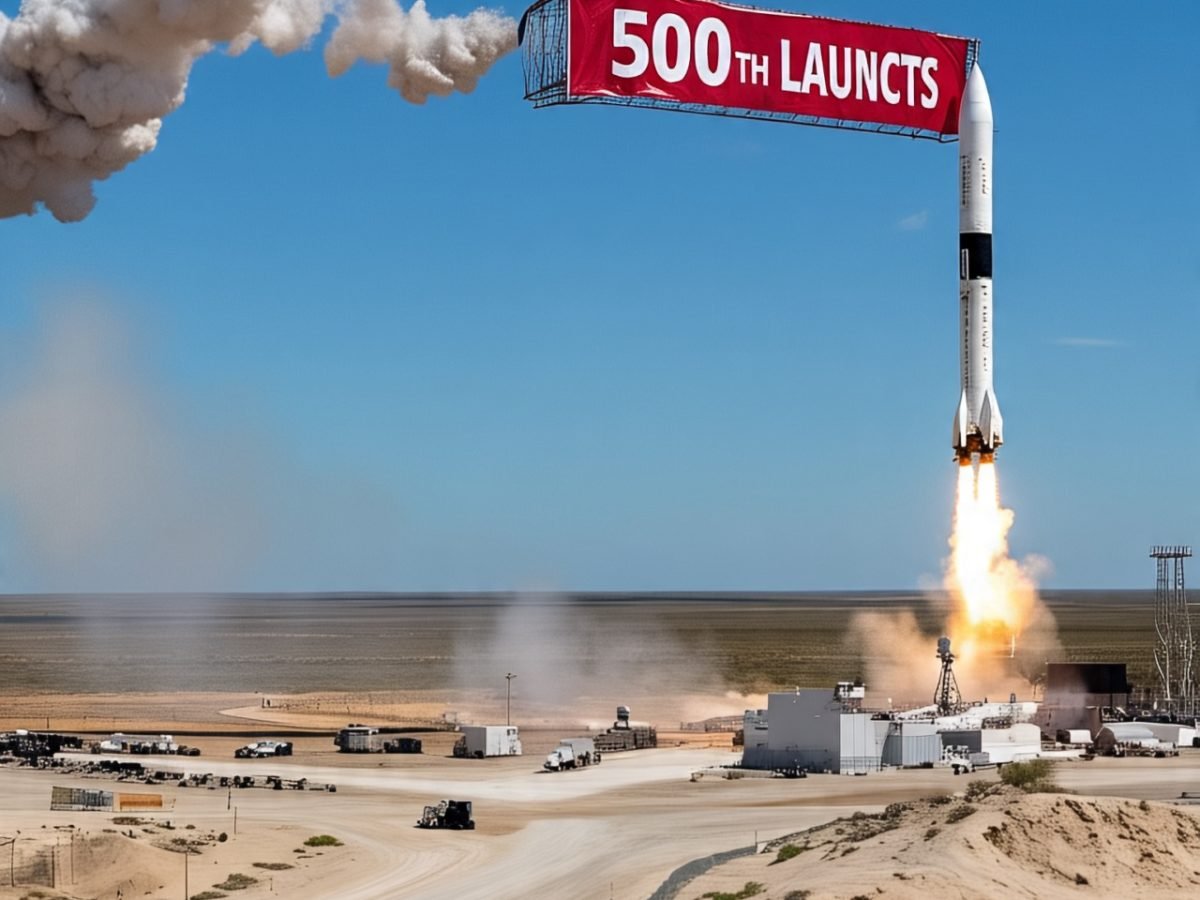SpaceX Sets Reuse Milestone with 500th Falcon 9 Launch, Breaking Rocket Flight Record

Table of Contents
A Historic Moment for SpaceX and Spaceflight
In the early hours of July 2, SpaceX made history once again with the 500th launch of its Falcon 9 rocket, setting a new benchmark for rocket reusability and frequency. The mission successfully deployed 27 Starlink satellites into low Earth orbit, further expanding the company’s growing internet megaconstellation.
This milestone cements Falcon 9’s position as the most frequently launched U.S. rocket in history and a cornerstone of SpaceX’s strategy to make space more accessible through cost-effective, rapid-turnaround launches.
Mission Details: Another Success from Cape Canaveral
The launch occurred at 2:28 a.m. EDT from Cape Canaveral Space Force Station in Florida. It was another textbook operation, with the first stage booster, Booster 1067, completing its 29th flight—a record for any individual Falcon 9 booster. After stage separation, the booster made a smooth landing on the autonomous drone ship “A Shortfall of Gravitas”, stationed in the Atlantic Ocean.
This marks:
The 472nd Falcon 9 landing
The 439th reuse of a Falcon 9 booster
SpaceX continues to prove that rocket reuse is not only viable but efficient and reliable, significantly lowering the cost of orbital access.
Starlink Deployment: Expanding Global Coverage
The 27 satellites launched in this mission are part of Starlink Group 10-25. These satellites join more than 7,900 active Starlink units in orbit, helping to build out what is already the largest satellite constellation in human history.
Starlink is designed to provide:
Global broadband internet, including rural and underserved areas
Limited direct-to-cell coverage, supporting emergency connectivity and mobility solutions
This constellation is a key part of SpaceX’s long-term business model and its ambition to fund future missions to the Moon and Mars.
Falcon 9: A Legacy of Evolution and Innovation
Since its debut on June 4, 2010, the Falcon 9 rocket has undergone five major upgrades, ultimately arriving at the Block 5 version that’s now the standard for most SpaceX launches.
Key Milestones in Falcon 9 Development:
Version 1.0 (2010–2013): First successful orbital flights
Version 1.1 (2013–2015): Larger rocket with more thrust
Full Thrust (2015–2018): Enhanced performance and reusability
Block 4 (2017–2018): Testing design features for reusability
Block 5 (2018–Present): Fully optimized for rapid turnaround and multiple reuses
The Block 5 variant has become the workhorse of both commercial and crewed missions, including partnerships with NASA for the Commercial Crew Program.
A Record of Reuse and Reliability
What sets Falcon 9 apart is its consistent demonstration of reusability. Each launch reinforces the viability of SpaceX’s approach, which treats rocket stages not as expendable one-time assets but as vehicles capable of flying dozens of times.
With Booster 1067 reaching 29 flights, SpaceX is testing the limits of how many times a rocket can be safely and effectively reused. This not only saves money but allows for faster launch cadence, supporting both commercial and government missions.
Implications for the Future of Space Access
This launch represents far more than a milestone in numbers. It showcases the transformative impact of reusable technology, and it sends a clear message to the global space industry: lower-cost, higher-frequency access to orbit is achievable.
Key implications include:
Reduced launch costs for satellites and space missions
Increased competition in the launch services market
Broader access for countries and companies with limited budgets
Acceleration of space-based infrastructure, including communications and observation networks
What’s Next for Falcon 9 and SpaceX
Looking ahead, SpaceX plans to continue pushing the Falcon 9’s reuse capabilities while scaling up operations for its next-generation system, Starship. Starship is intended for deep space missions, including lunar and Mars expeditions, but Falcon 9 remains the core vehicle for most near-Earth operations.
SpaceX also intends to:
Launch more frequent Starlink missions
Expand direct-to-cell services
Maintain high launch cadence with commercial and government clients
The 500th launch is not an endpoint—it’s a springboard into the future of sustainable, scalable space access.
Conclusion
With its 500th Falcon 9 launch, SpaceX has not only made history but reshaped the boundaries of what’s possible in orbital transport. The successful deployment of 27 more Starlink satellites and the record-setting 29th flight of Booster 1067 showcase a level of technical excellence and innovation unmatched in the aerospace industry.
SpaceX’s strategy of reusability has proven itself time and again, and as the company continues to refine its approach, the broader space community will be watching closely—and likely following in its footsteps.
FAQs
1. What makes this 500th Falcon 9 launch significant?
This launch marked the 500th time Falcon 9 has flown, setting records for reuse and landing success, further cementing SpaceX’s leadership in reusable rocketry.
2. How many times has Booster 1067 flown?
Booster 1067 completed its 29th mission, the most of any Falcon 9 booster to date.
3. What is the role of Starlink satellites in this mission?
The 27 satellites launched are part of the Starlink constellation, which aims to provide global broadband internet and limited direct-to-cell service.
4. Is Falcon 9 the most launched U.S. rocket?
Yes, Falcon 9 is now the most frequently launched rocket in U.S. history, surpassing all predecessors in both total launches and reusability.
5. Will SpaceX continue using Falcon 9 after Starship launches?
Yes, Falcon 9 will continue to handle most low Earth orbit missions, while Starship is designed for deep space exploration, including lunar and Martian missions.
